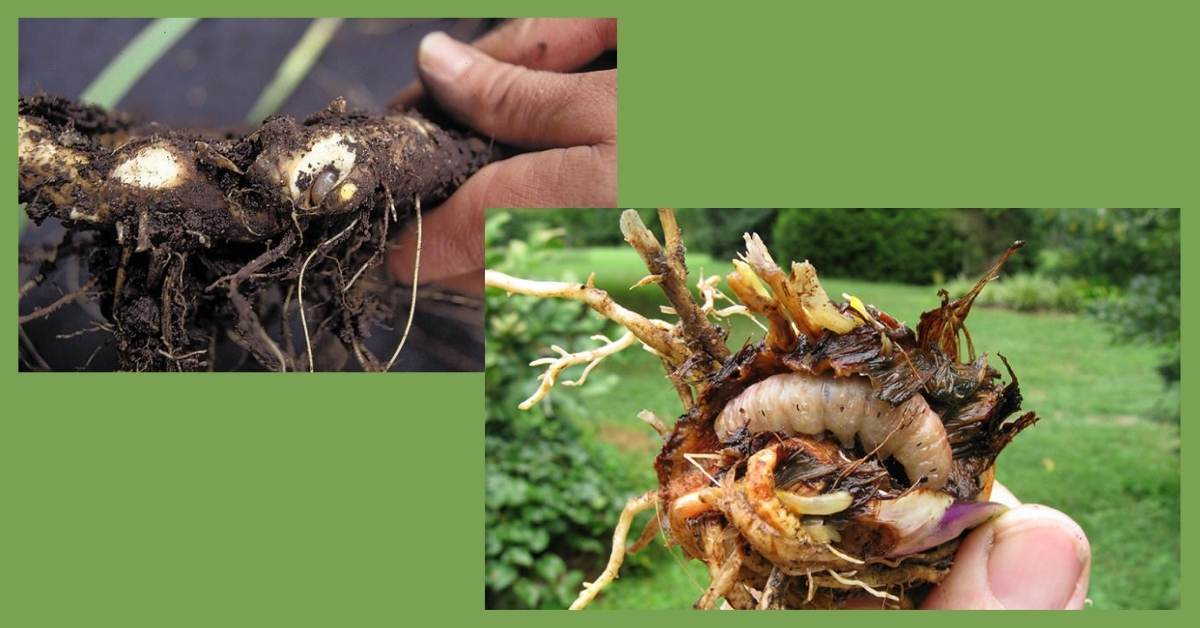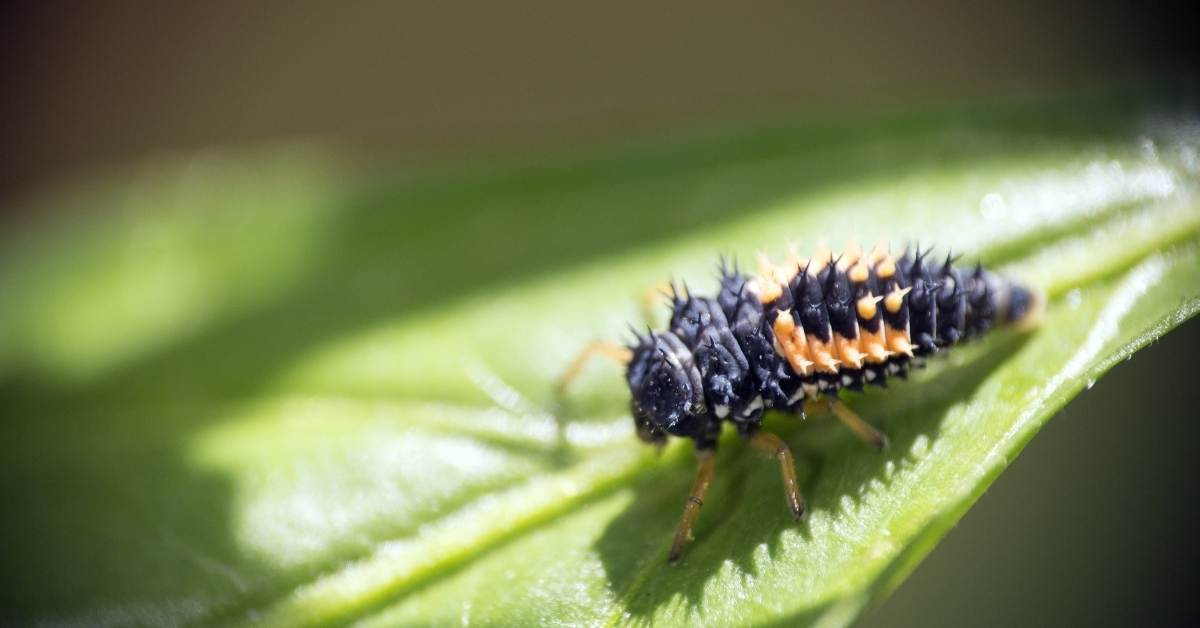Iris problems are pretty much confined to two distinct pests. Here is how to control Iris borer, which is the most common problem with Irises.
The first is the Borer
The adult moth lays her eggs in the leaves, and these overwinter in plant debris. In the spring, the young larvae crawl up the leaves and eat a hole inside. You’ll see some small pinhead-sized black spots with some streaking underneath the dot and possibly some brown tips on the leaves.
The larva travels down inside the leaves to the corm to grow up and become a rather large boring larva. They will eat away quite comfortably inside the corm, hollowing it out.

The effective method of dealing with them involves a two-step process.
1) Control the adults. The easiest way to do this is to hang yellow sticky traps in your garden. The adult flies will go to the traps and be entangled in the glue. This isn’t the most scenic thing in the garden (yellow tags everywhere), but it is effective at stopping many of the adults.
2) Control the grubs. The second part of control is to dig and divide your plants on a regular basis (every 2-3 years or if flowering is reduced.
You might like this: Growing Bearded Iris
Digging the corm up will allow you to look closely at all parts of the corm and carve away any eaten or rotting sections. You can stomp any larva you find. You can also use a beneficial nematode around the iris patch so these predator nematodes will eat the eggs.
Sanitation is critical (remove all dead and spent leaves in the fall to remove overwintering spots above ground). Remove all dead flowers when they start to fade.
The main problem with these larvae is that they open up the iris to infection, and rotting is common in infested corms.

Bacterial Soft Rot
This is a rotting away of the corm and is very often associated with the iris borer opening up and giving bacteria an entrance to the corm.
You might like this: Iris 101: How To Plant An Iris Garden – The Best Guide!
The “cure” is to control Borer and sanitation.
If you have reduced flowering, then certainly examine all the corms for possible damage. Dig, divide and cut away any soft infected parts.
Some growers dust the wounded corms with sulfur. I never have, simply allowing them to sit for a few hours in sunlight to allow the wounds to harden up. Replant.

